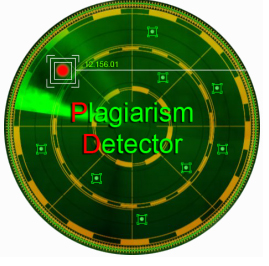ARCHETYPAL ANALYSIS IN THE SCHOOL FOR GOOD AND EVIL NOVEL BY SOMAN CHAINANI
Abstract
This research focuses on the categories and description of archetypes that exist in the characters Sophie, Agatha, and Tedros in the novel The School for Good and Evil by Soman Chainani. The main purpose of this research is to find out the categories of archetypes in the characters in the novel. This study applied the theoretical Carl Gustav Jung about archetype to describe and analyze the characters. This research was applying a qualitative descriptive method. The data source is from the novel The School for Good and Evil by Soman Chainani, while the research data is in the form of dialogues and narratives. The result of this analysis shows that there are four categories of archetypes contained in the novel, namely persona, shadow, animus, and hero which are found by three characters in the novel namely Sophie, Agatha, and Tedros. Sophie’s character has two persona archetypes, three shadow archetypes, and one hero archetype in her. The Agatha’s character has one persona archetype, three animus archetypes, and one hero archetype. Meanwhile, the Tedros’s character only has one archetype hero in him.
Keywords: Archetypes, characters, Jung analysis, novel, psychology of literature
Full Text:
PDFReferences
Abrams, M. H.–Harpham, G. G. (2012). A Glossary of Literary Terms. Wadsworth: Cengage Learning.
Afrianto. (2018). Poem from a Linguistic Point of View. Linguistics, Literature, & Language Teaching Series: An Overview of Current Issues in Literature, Linguistics, and Language Teaching. Universitas Indonesia.
Amelia, D. (2016). Indonesian Literature’s Position in World Literature. Teknosastik: Jurnal Bahasa dan Sastra, 14(2), 1-5.
Bartholomew, J. (1989). Webster’s Encyclopedic Unabridged Dictionary of the English Language. New York: Portland House. Inc.
Bogdan, R. & Biklen, S. (1982). Qualitative Research for Education (2nd Ed.). Boston: Allan and Bacon.
Chainani, S. (2013). The School For Good and Evil. United States: HarperCollins.
Fazria, Sylvia. (2022). Archetype Analysis of Characters in “Almond” Novel by Sohn Won Pyung (2017). Thesis. Sekolah Tinggi Bahasa Asing JIA.
Feist, J & Feist, G. (2009). Theories of Personality seventh edition. Texas: Mc-Grew Hill Companies.
Grace, S. & Nitisari, D. (2022). The Archetypes in The Main Character of Joe Goldberg in The Novel YOU. UG JURNAL, VOL.16, 1-8.
Jung, C. (1959). The Syzygy Anima and Animus. In Adler G. & Hull R. (Eds.), Collected Works of C.G. Jung, Volume 9 (Part 2): Aion: Researches into the Phenomenology of the Self (pp. 11-22). PRINCETON, N.J.: Princeton University Press. Doi:10.2307/j.ctt5hhqh6.9
Jung, C. G. (1948/1960a). Instinct and the unconscious. In Collected works (Vol. 8).
Jung, C. G. (1951/1959a). Aion: Researches into the phenomenology of the self. In Collected works (Vol. 9, Pt. 2).
Jung, C. G. (1955). Archetype and the Collective Unconscious. London: Routledge.
Kardiansyah, M. Y. (n.d.). (2016). The index of hero’s power and nobility in Shakespearean tragedy drama: A semiotic study. Teknosastik: Jurnal Bahasa dan Sastra, 14(2), 11-17.
Kasih, E. N. (2018). Formulating Western Fiction in Garrett Touch of Texas. Arab World English Journal for Translation & Literary Studies, 2 (2). 142-155.
Kasih, E. N. E. W., Husna, M., Mulia, M. R., & Fithratullah, M. (2022). Delineating Masculinity Belief in Guy de Maupassants’ Three Short Stories. Journal of Feminism and Gender Studies, 2(2), 139-151.
Kuswoyo, H., & Susardi, S. (2016). Thematic progression in EFL students’ academic writings: A systemic functional grammar study. Teknosastik, 14(2), 39-45.
Mangudis, F. S. (2021). Archetypal Analysis as Reflected in Harry Potter and The Philosopher’s Stone Novel by JK Rowling. Thesis. Manado; Sam Ratulangi.
Moleong Lexy. (2002). Metode Penelitian Kualitatif. Bandung : CV. Remaja, hal 11.
Nixon, C. L. (2009). Novel Definitions: An Anthology of Commentary On The Novel. Broadview Press.
Nurdayanti, C., Natsir, M., & Lubis, I.S. (2020). The Archetype Analysis of Main Character in Hush, Hush Novel. Jurnal Bahasa, Sastra, Seni, dan Budaya, 4(1), 81-92.
Ratna, Nyoman Kutha. (2004). Teori, Metode dan Teknik Penelitian Sastra. Yogyakarta: Pustaka Pelajar.
Rido, A. (2015). The Use of Discourse Markers as an Interactive Feature in Science Lecture Discourse in L2 Setting. TELFIN, 90.
Samanik, & Lianasari, F. (2016). Antimatter technology: The bridge between science Angles and Demons. Teknosastik: Jurnal Bahasa dan Sastra, 14(2), 18-27.
Sari, Yulia Puspita & Putra, Emil. (2021). Archetypal Images Reflected in Dracula Novel by Bram Stoker. Journal Basis, 8(2), 165-172.
Sriastuti, A. (2023). A Quest on the Development of Feminism in America in Riding Freedom and Fingersmith. Teknosastik: Jurnal Bahasa dan Sastra, 21(1).
Yunara, Yurisa Yulia & Kardiansyah, M. Yuseano. (2017). Animus personality in Martin’s A Song of Ice and Fire: A Game of Thrones. Teknosastik: Jurnal Bahasa dan Sastra, 15(1), 7-13.
DOI: https://doi.org/10.33365/llj.v4i2.3792
Refbacks
- There are currently no refbacks.
Linguistics and Literature Journal
Published by Universitas Teknokrat Indonesia
Organized by Faculty of Arts and Education
Jl. Zainal Abidin Pagaralam, No.9-11, Labuhanratu, Bandarlampung, Indonesia
Telepon : 0721 70 20 22
W : http://jim.teknokrat.ac.id/index.php/linguistics_and_literature/index










